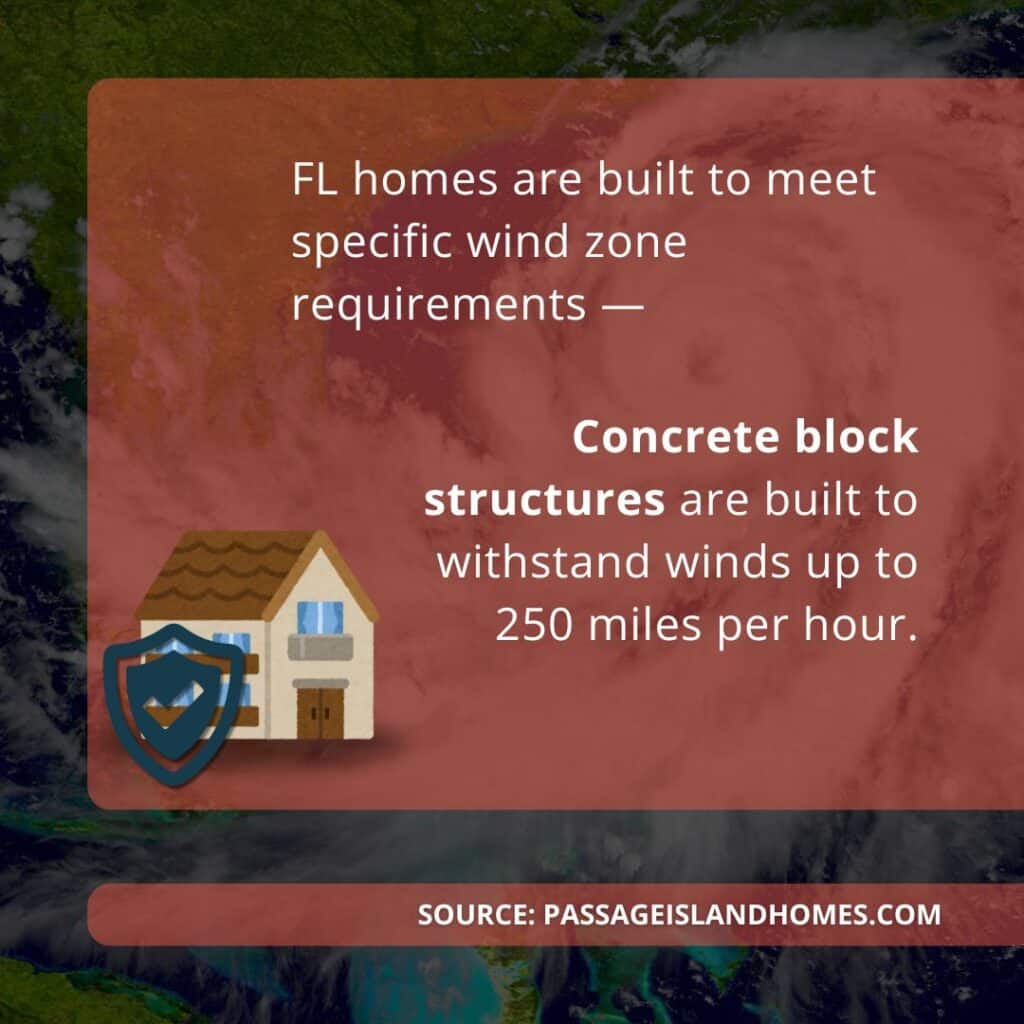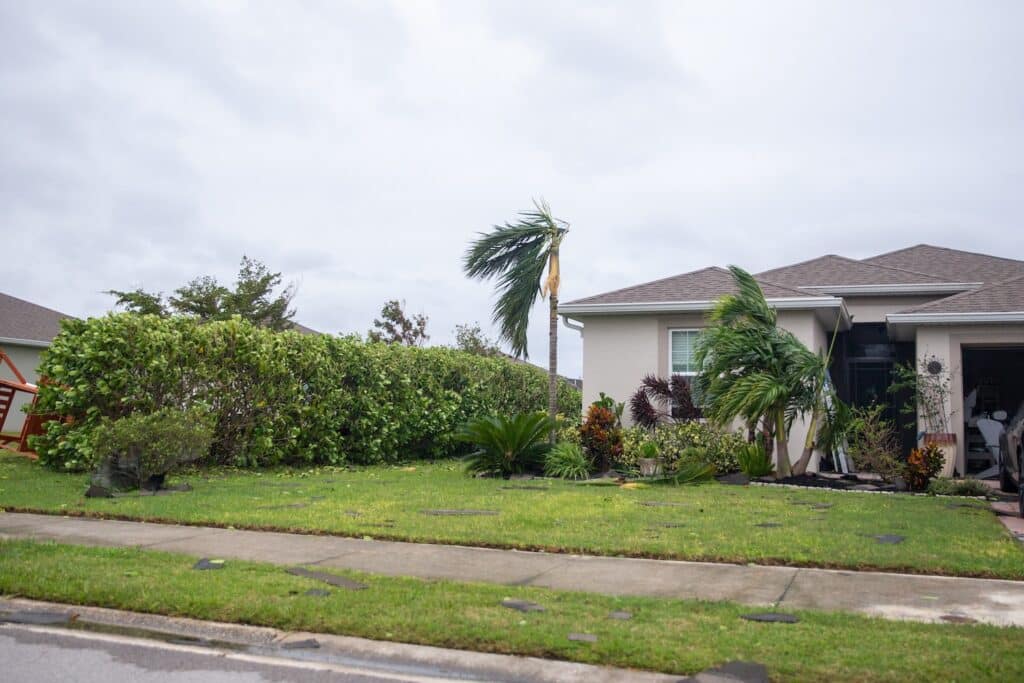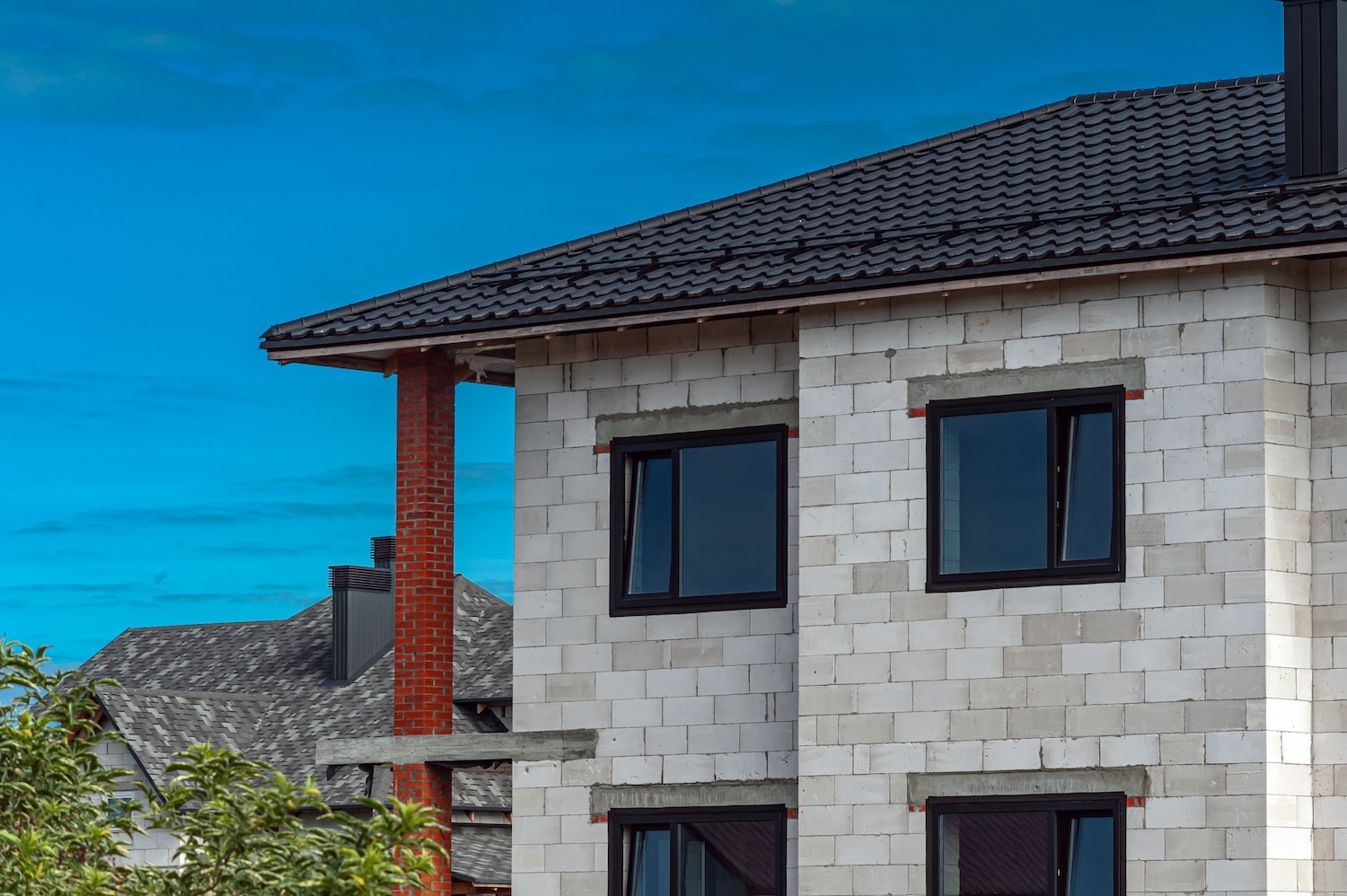Florida’s weather is as beautiful as it is unpredictable. With hurricane season bringing high winds and heavy storms, it’s no surprise that homeowners want to know if their house is built to withstand the elements. Concrete block is a trusted choice, but questions still arise—how much fierce Florida wind can a house withstand before sustaining damage?
Whether you’re preparing for the next storm or curious about your home’s durability, you’ll find valuable insights below to help you stay ahead of the weather.
Table of Contents
ToggleWhy Concrete Block Homes Are Ideal for Florida
Concrete block homes are a top choice for Florida homeowners, and it’s easy to see why. Known for their durability and strength, these homes are designed to handle Florida’s unique weather challenges.
Unlike traditional wood-frame construction, concrete block homes can resist rot, termites, and the high humidity levels that come with living in the Sunshine State.
One of the biggest advantages is their ability to withstand intense winds. Concrete blocks are dense and heavy, providing a stable structure that’s far less likely to shift or collapse under pressure.
Additionally, Florida building codes require new homes to meet strict wind resistance standards. Concrete block homes often exceed these requirements, offering peace of mind during severe storms.
Beyond structural stability, concrete block is also known for energy efficiency, which can help keep indoor temperatures comfortable despite the state’s hot and humid climate.

Measuring Wind Resistance in Florida
Wind resistance in Florida homes is no small matter, especially in a state where hurricanes are a regular threat.
To ensure homes can handle these conditions, wind resistance is measured using several key factors:
- Wind Load Capacity: This refers to the maximum wind force a structure can withstand without sustaining significant damage. For concrete block homes, wind load capacity is typically higher than that of wood-frame structures.
- Florida Building Codes: Homes in Florida are built to meet specific wind zone requirements. For example, many areas mandate that structures withstand winds between 130 and 180 mph, depending on their location and risk level. Concrete block homes often meet or exceed these standards, withstanding up to 250 mile per hour wind.
- Hurricane Categories: To understand how wind resistance applies, it’s helpful to compare it with the Saffir-Simpson Hurricane Wind Scale. Concrete block homes are designed to handle winds associated with Category 3 hurricanes (111-129 mph) and, with additional reinforcements, can endure winds from even stronger storms.
Roof connections, window reinforcements, and properly installed hurricane straps are all tested to ensure they can handle extreme conditions.
Signs Your Home May Be Vulnerable to Wind Damage
Even the sturdiest homes can develop weaknesses over time, making them more susceptible to wind damage. Recognizing these vulnerabilities early can help you take action before a storm hits.
Look out for these warning signs:
- Cracks in the walls or foundation
- Loose or missing roof tiles
- Gaps around windows or doors
- Aging or damaged hurricane straps
- Moisture damage in the structure
These issues can weaken the wind resistance of your home, leaving it at risk during high winds. Regular inspections and timely repairs are key to maintaining the structural integrity of your house.
Proactive Steps for Wind Resistance
Proactive maintenance is essential for keeping your concrete block home ready to face Florida’s unpredictable weather.
While these homes are naturally durable, regular upkeep ensures they stay in peak condition to handle high winds. Some steps to strengthen your home’s wind resistance:
- Inspect the roof regularly and replace any loose or damaged tiles
- Check window and door seals to prevent wind from entering weak points
- Add or upgrade hurricane shutters for enhanced protection
- Secure outdoor furniture and clear debris to avoid windborne hazards
- Replace worn hurricane straps or clips with newer, stronger materials

Other Recommended Maintenance
Beyond wind resistance, keeping your home in good shape overall contributes to its safety and longevity. Consider these additional maintenance tips:
- Check the foundation and walls for cracks or signs of settling after storms
- Keep gutters and downspouts clear to prevent water damage that could weaken structural integrity
- Maintain landscaping by trimming trees and removing branches near the house
Addressing these areas helps fortify your home against multiple weather-related risks while maintaining its overall value.
When to Call a Professional
Some aspects of wind resistance can only be properly assessed by a professional. While routine maintenance helps keep your home in good shape, an inspection can uncover hidden vulnerabilities that might put your property at risk during severe weather.
Consider calling a professional if:
- Your home has visible cracks in the walls or the foundation
- Roof tiles or shingles are loose, missing, or damaged
- Windows and doors don’t seal properly or show signs of wear
- You’re unsure whether your home meets Florida’s current building codes
An inspection can also provide peace of mind after a major storm. Professionals assess structural integrity, suggest upgrades, and help ensure your home is ready to withstand the next hurricane season.
Conclusion
The average concrete block house is built to withstand the harshest wind, especially in Florida. But regular upkeep and professional inspections are key to maintaining that resilience.
In Central Florida, the Tier-1 Pro Inspections team specializes in evaluating and preparing homes to withstand Florida’s challenging conditions. Schedule an inspection today to make sure your home is ready to weather any storm that comes our way.

